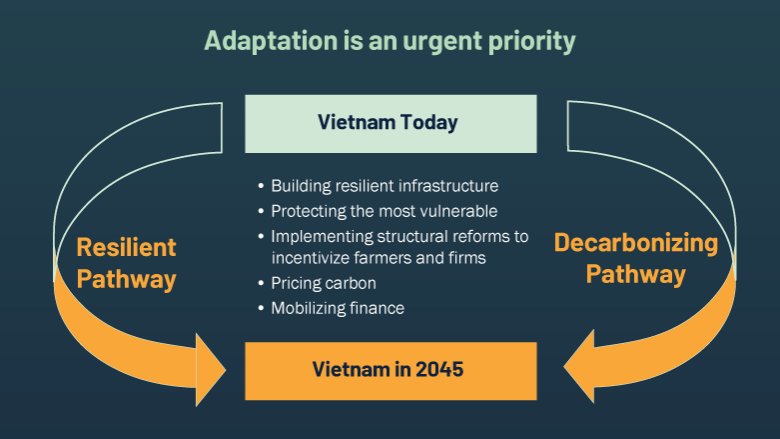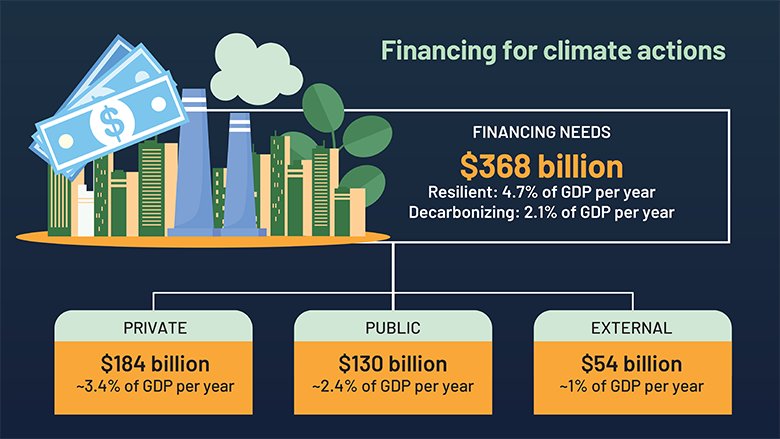Vietnam is increasingly seeing its development affected by climate change and now faces critical questions about how to respond. The Vietnam Country Climate and Development Report proposes that Vietnam shift its development paradigm by incorporating two critical pathways – resilient pathway and decarbonizing pathway – that will help the country balance its development goals with increasing climate risks.
After more than two decades of steady growth, Vietnam has set an ambitious goal of reaching high-income status by 2045. It has been recognized in the 2021-2030 Socioeconomic Development Strategy that the country’s economic transformation will greatly depend on better management of natural capital – the extensive stocks of agricultural, forest, and mineral resources that have helped drive development.
Yet Vietnam, with over 3,200 km of coastline and many low-lying cities and river delta regions, is one of the most vulnerable countries in the world to climate change. Climate change impacts – mainly higher and more variable temperatures and sea level rise – are already disrupting economic activity and undermining growth. Initial calculations suggest that Vietnam lost $10 billion in 2020, or 3.2 percent of GDP, to climate change impacts.
Without proper adaptation and mitigation measures, it is estimated climate change will cost Vietnam about 12 percent to 14.5 percent of GDP a year by 2050 and could plunge up to one million people into extreme poverty by 2030. As Vietnam considers its climate strategy going forward, the CCDR identifies actions and options for both the public and private sector to build climate resilience, achieve the country’s pledge of net-zero greenhouse gas emissions by 2050, and advance socioeconomic development, all while ensuring a “just transition” to support households disrupted by the shift to a climate-resilient, low-carbon economy.
Pursuing a climate-resilient and net zero emissions development pathway is estimated to require additional investments of about 6.8 percent of GDP, or a cumulative US$368 billion through 2040. With the right mix of policies and strategies, Vietnam can leverage its decarbonization efforts to advance development objectives so that achieving net zero emissions does not reduce GDP growth. Government commitments can and should be bolstered by the engagement of the domestic private sector and through external finance, public and private.

